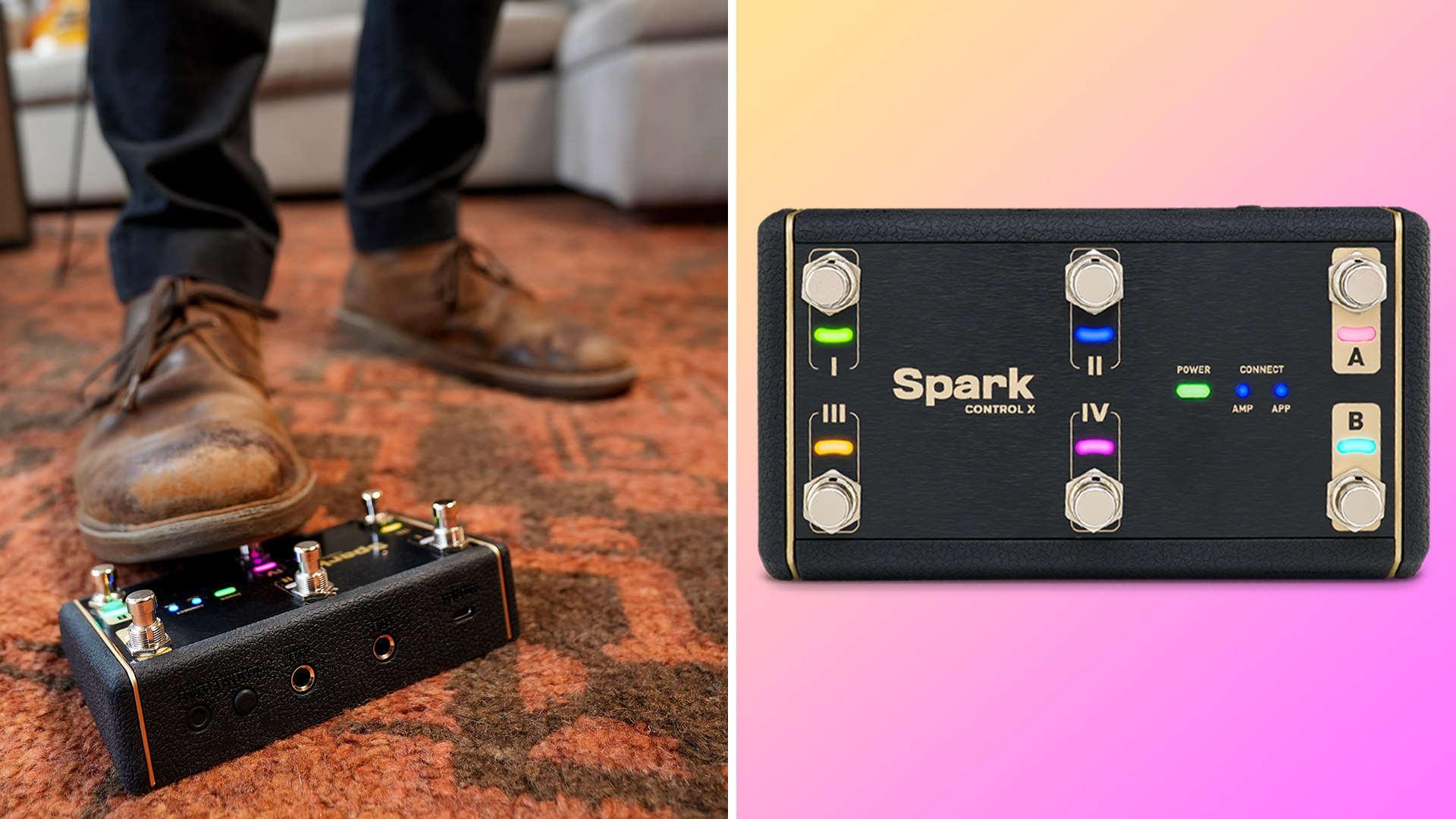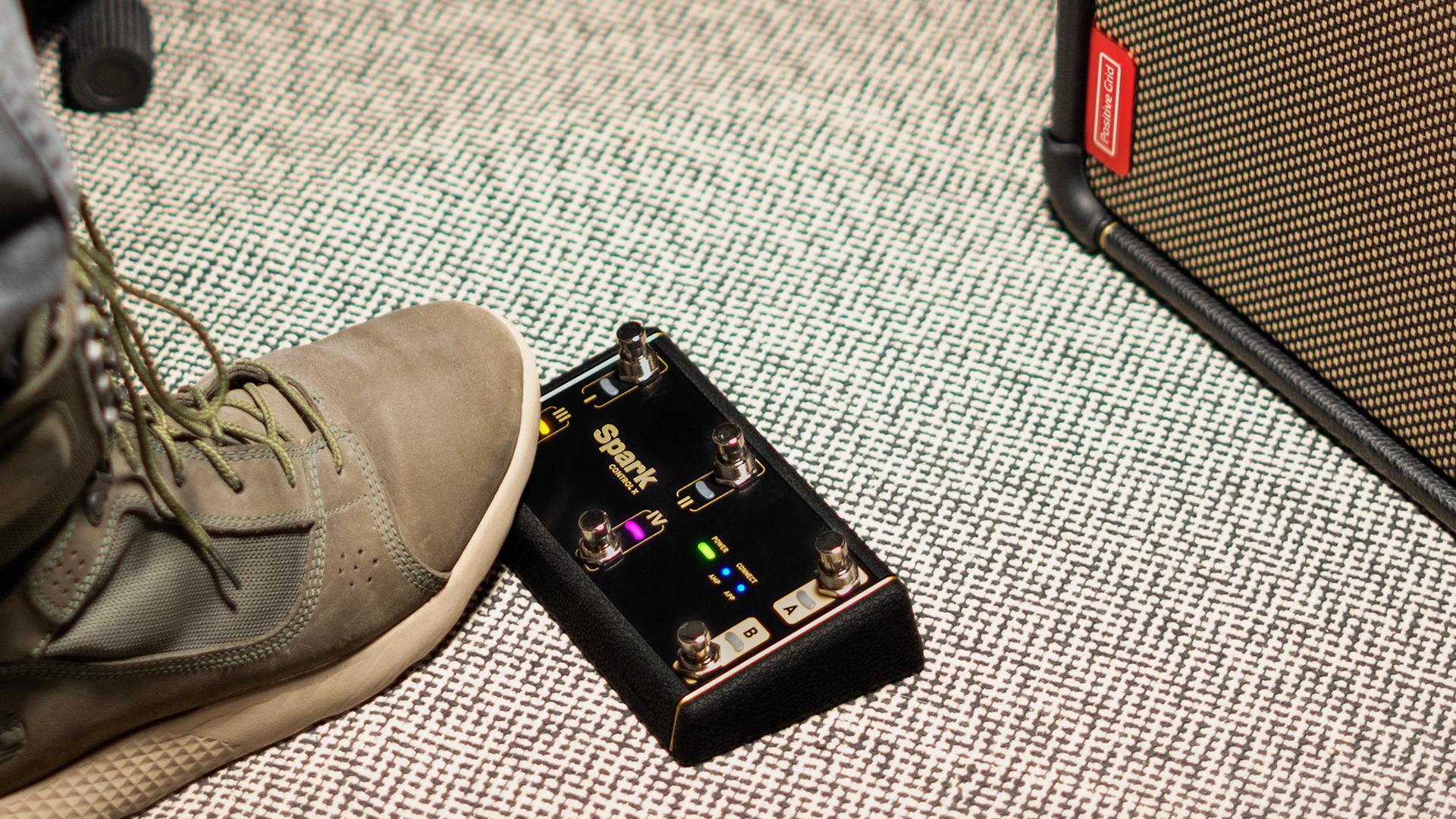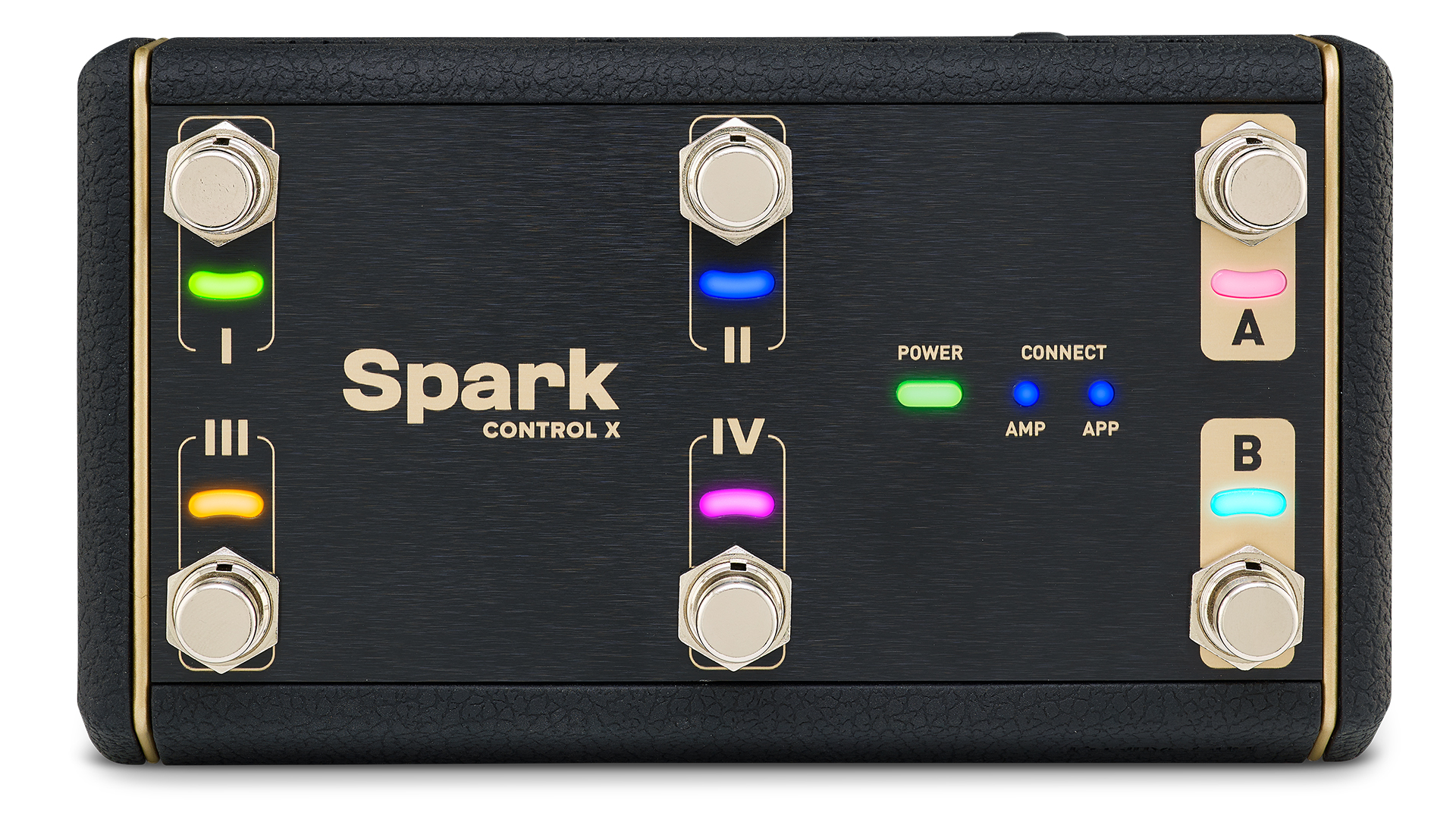NAMM 2024: “Hands-free control for the entire Spark family of smart amps” – Positive Grid’s colorful new Control X footswitch gives us expression pedal inputs – and serious Helix vibes. Could a Spark floor unit be in the offing?
It still doesn’t have a looper, but the Spark Control X points to an interesting new future for the dominant smart amp

NAMM 2024: Positive Grid has made some serious waves already at NAMM 2024, announcing a Spark LINK wireless guitar system and the all-in-one backline/PA/smart amp the Spark LIVE. Its third and final announcement appears to be an updated take on its wireless footswitch, named the Control X.
The original Spark Control launched in November 2021 and offered four assignable footswitches, enabling you to control patches, effects and smart practice features (like audio playback), according to your preference.
The new Control X ups the footswitch count to six and pairs them all with colorful LEDs that reflect the mode or assignment of the switch (similar to Line 6’s HX Stomp/ Helix lines, or Fender’s Tone Master Pro – but we’ll come back to that).

As opposed to the long four-in-a-row arrangment of its predecessor, the six switches are positioned in two rows of three. It’s also now edged in tolex, befitting the Spark amps’ aesthetic.
More importantly, it also responds to two key demands from players regarding the original Spark Control, now offering two expression pedal inputs and the ability to directly connect to new Spark hardware, without using the app.
Sadly, it’s only the just-announced Spark LIVE and subsequent Spark amp releases that will have this ability – the vast majority of the Spark user base will still need to connect the footswitch via the app and keep the app open.
Clearly, Positive Grid is facing a hardware limitation when it comes to the previous Sparks or we’d imagine this would otherwise have been resolved in a firmware update. Still, the app connections on the old Spark Control were pretty seamless, so we’d expect the same functionality here.
Get The Pick Newsletter
All the latest guitar news, interviews, lessons, reviews, deals and more, direct to your inbox!
There’s another potential gripe for Spark devotees, too – in that the tight positioning of the original Spark Control’s footswitches was already an issue for larger-footed players and we suspect the even more condensed (and double-stacked) Control X will feel too compact for some. And there’s still no looper.

Instead the emphasis is clearly on making it super portable and, as you can see from the pics, its footprint is only slightly larger than a smart phone. What’s more, it's got a rechargeable battery that offers a very impressive 150 hours of playing time.
It’s priced at $149, compared to the original Spark Control’s $109 tag, but the Control X is clearly an upgrade – and we suspect the original Control will remain on the market to give players some choice.

Crucially, it marks a bigger step forward for the Spark series and feels like the missing link between the Spark series and the likes of the techier floor modellers on the market. Positive Grid already has the tones, software and hardware to make it one of the best-selling amps of 2023 – but it’s been missing a convenient floor option.
So while we probably won’t be seeing it at NAMM 2024, the prospect of a Spark floor unit that could undercut the likes of Line 6’s Helix as the go-to affordable floor modeller suddenly feels a lot more possible.
For more information on the Control X, head to Positive Grid.

Matt is Deputy Editor for GuitarWorld.com. Before that he spent 10 years as a freelance music journalist, interviewing artists for the likes of Total Guitar, Guitarist, Guitar World, MusicRadar, NME.com, DJ Mag and Electronic Sound. In 2020, he launched CreativeMoney.co.uk, which aims to share the ideas that make creative lifestyles more sustainable. He plays guitar, but should not be allowed near your delay pedals.
“The guitar is the instrument of the people”: The IGF Summer School celebrates 30 years of levelling up guitar players with a bumper Bath event
These are the gear trends that will shape your guitar buying in 2025: we explored every inch of NAMM to discover what brands are plotting for the next 12 months – and how the guitar gear world at large is changing











![A black-and-white action shot of Sergeant Thunderhoof perform live: [from left] Mark Sayer, Dan Flitcroft, Jim Camp and Josh Gallop](https://cdn.mos.cms.futurecdn.net/am3UhJbsxAE239XRRZ8zC8.jpg)